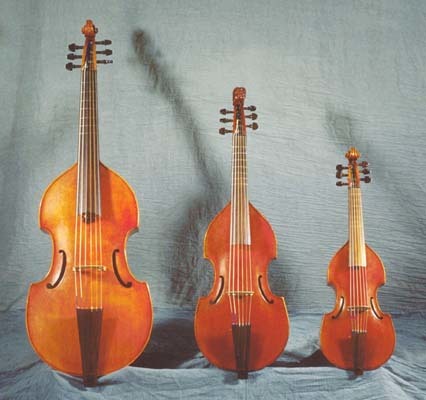Chamber Music Raleigh‘s 2017-18 season has featured the formation of not just one, but two brand new ensembles. The first was the Isosceles String Quartet back in January, and CMR closed this season with the sold-out Triangle debut performance of the North Carolina Viol Consort. As the name implies, this new ensemble, formed and led by UNC-Chapel Hill professor Brent Wissick, uses only the viol (or viola da gamba, in Italian) in treble and bass forms. For this performance, the program consisted of English Baroque composers, which Wissick brought to life with commentary on how viola da gamba music functioned in the English court. He was joined by Gail Ann Schroeder, Allison Willet, Webster Williams, and Robbie Link.
Together the five musicians played varying sizes of treble, tenor and bass viols. As Wissick explained, the unique sound of the viol can be attributed to several factors: the strings are made of gut, rather than stainless steel or other metals, there are six strings rather than four, and there are frets on the neck akin to a guitar. According to the name, the viola da gamba is played and bowed between the legs like a modern cello, even the treble viol. As a result of all of these things, the viol has a more mellow and soft sound compared to instruments of the violin family, and are best suited to small spaces. The NC Museum of Art’s SECU Auditorium proved to be the perfect “living room” size for this historically informed performance.
Throughout the concert, communication among the musicians was clearly paramount; many of the pieces programmed consisted of a slightly homophonic texture with constantly moving parts just beneath the melody. Achieving this balance, especially when the melody’s placement was always changing, was no small feat. A set of John Dowland pieces established this to be true for both a languid Pavan and lilting Galliard. William Byrd’s “Browning,” a cheery folk song, featured the musicians in overlapping “conversations” framing the melody. In fact, much of the music seemed like a fluid, seamless exchange among the five musicians. John Jenkins’ “Fantasy” contains many imitative phrases that require expert matching of articulation and expression, even across the viol’s sizes. This was done well by the NC Consort.
The second half of the program featured two Suites by William Lawes, a lesser-known composer whom Wissick described as “quirky” and “unconventional.” The sudden, unpredictable mood and complex texture changes definitely added some variety to the program, and introduced the audience to a composer whom they had perhaps never heard before. For a slightly more melodically predictable but no less pleasing end to the concert, the NC Viol Consort performed a set of pieces by Anthony Holborne, inspired by folk music and fantasy imagery. These joyfully closed a very immersive and educational concert.












